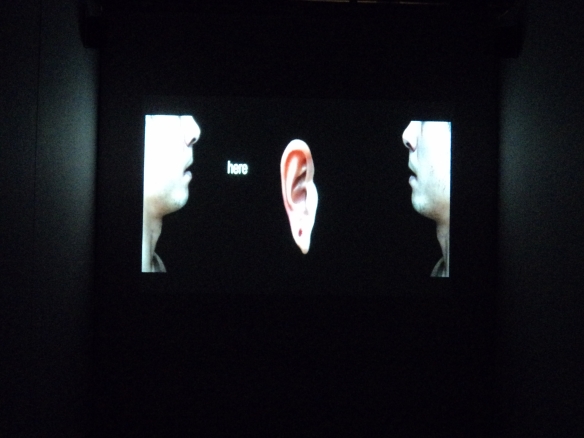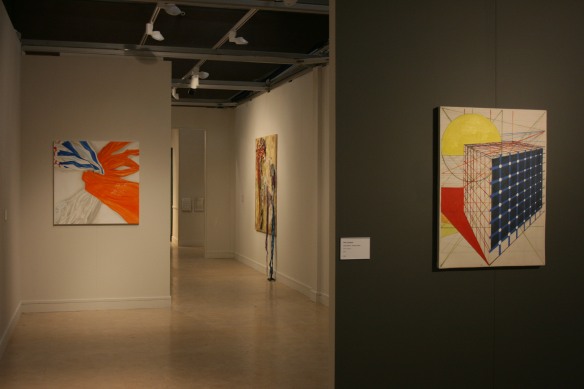This has been a disturbing week for the visual arts in Wales and the wider museums sector: We heard that National Museums Wales will be shedding around 35 jobs and that after six years Mermaid & Monster will stop their work of promoting artists at art fairs.
The M&M website has already vanished but you can read the statement here or send messages of support here. However there was something else that almost slipped under my radar. In his email to tell me about the end of M&M, Gordon Dalton told me what the future holds for M&M, “There’ll be a couple of M&M shows this year, but we had been working on our largest show to date at Newport Museum – which has now been cancelled due to closure – this has left a big gap in our work.”
Did you spot that bombshell? If the rumour mill is to be believed (and I have several very reliable sources for this information), the temporary exhibitions programme (TEP) seems to be succumbing to the swingeing cuts that local authorities are making to save money. Try as I might (and this blog follows many hours of scouring through council minutes on the Newport Council website) I can find no publicly available resolution to axe this really important programme, previously featured in my other blog posts (Andrew Cooper here and Simon Fenoulhet here), but The South Wales Argus picked it up before Christmas in this story.
Since the Arts Council of Wales Investment Review, 2010, whose outcome was announced just before the depth and severity of the economic crisis had really been computed, local authorities have come under increasing pressure to trim what they might term “non essential” services, i.e. those that they have no statutory obligation to deliver and the arts were always going to be an easy target. The recent furore around the 100% arts funding cuts in Newcastle might make the cutting of the programme at NMAG look modest in comparison, but then in Newport there’s little else to cut, no other public galleries in a city sandwiched between Cardiff and Bristol that should/could be attracting audiences from both catchments to help revive its failing fortunes in the wake of the withdrawal of some of the major High St chains and the downsizing (though thankfully not now the closure) of the Passport Office in Newport. As the new city centre development gets back on track after a long hiatus, the museum and art gallery will be right next to a big part of the development.
But contemporary gallery programmes are not just about leisure/pleasure. Along with creating destinations for cultural tourists (who spend lots of money as a result of their visits – see here if you like statistics), they are also a way of engaging communities with ideas and with the notion of continuing their education and thinking beyond the classroom, and this is how entrepreneurship can be encouraged, along with the first steps into further education opportunities. So losing jobs at the National Museum or at Newport Museum & Art Gallery seems to be counter-productive as Wales struggles to roll with the financial punches.And, of course, gallery visitors, interested in contemporary art, are also interested in contemporary theatre, so what impact would the closure of the NM&AG temporary exhibitions programme have on audiences for The Riverfront, which also has a series of gallery spaces (albeit more community focussed than NM&AG’s)?
Later today Rosemary Butler AM, Assembly Member for Newport West since 1999 and Presiding Officer of the National Assembly will be opening 56:56 an exhibition that celebrates 56 years of 56 Group Wales. It opens at 11.30am and all are welcome to get along to show support. As far as I can gather, this will be the penultimate show in the Temporary Exhibitions Programme, which has been running for over 40 years. I sincerely hope that she will lend her support to the programme in any public consultation that must surely follow a decision to close the TEP.
If lost, we will also be saying goodbye to an important new strand of work to create a showcase for recent graduates – Fresh Paint in 2012, brought together emerging artists from art schools across South Wales. Visual Arts Officer, Shaun Featherstone, planned to expand the reach across Wales and over the border. This is particularly sad as NM&AG was really beginning to connect with the Fine Art Course at University of Wales, Newport.
But of course, the Fine Art course is coming to an end and I’ll be giving what I can only imagine will be last talk to Fine Art Students at UWN as part of Creative Futures 2013. What can I tell them? That the opportunities for them to continue their practice in Newport and contribute to it’s creative and economic future have now shrunk further? When I look at the buzz created by artists in Cardiff and Swansea, supported by the hubs of the council funded galleries I can see that there is so much that Newport could be achieving, so much new additional funding that can be drawn into the city, stimulating activity for the benefit of the wider community.
I hope the rumours are wrong – please use the comments posts to let me know if you can confirm or deny them or to add your voice. Local Authority budgets for the next year will be set soon so if action is needed it will have to be quick. I’ll be following up on this as the picture becomes clearer.
Update #1 there’s now an online petition to save the exhibition programme at NMAG you can sign it here
Update #2 NMAG has approximately 28,000 visitors per year, or 90 per day. If they each spend a modest £2.50 (and most cultural tourism multipliers are many times higher) that’s £70,000 that goes into the local community, not to mention rail and bus fares.
Before the Arts Council of Wales’ Investment Review, NMAG had an ACW revenue grant of £42,374. The programme costs Newport £40,000 to run, including salaries, on-costs and the programme budget, the latter is supplemented by a current Arts Council of Wales Lottery grant of £13,314. This would have delivered fourteen exhibitions, but the programme will be curtailed if the cuts are approved. The TEP also enables exhibiting artists to apply for funding to create new works for their exhibition at NMAG (and many of the exhibitions are of new work not seen anywhere else), supporting the wider arts economy in Wales and helping to retain talent.
If you want to register your concern about the proposed cut to the Temporary Exhibitions Programme at NMAG you can write to the Leader of Newport Council, Councillor Bob Bright (contact details here) and if you live in Newport you can contact the Councillor for your ward here and/or take part in the public consultation about budget cuts here, but be quick, all responses must be in by Feb 13 in advance of the council meeting on Feb 26. NB there is no reference in the consultation documents to the closure of NMAG’s TEP nor of other culture cuts so it’s difficult to see how the public are supposed to make an informed decision.





